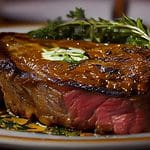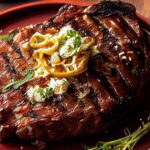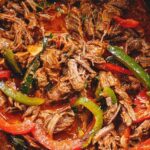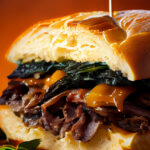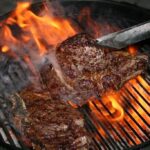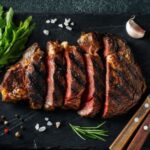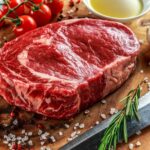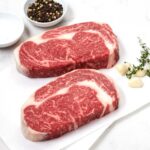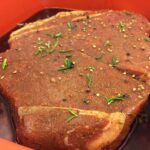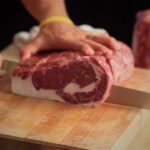How to Cook a Ribeye Steak in a Cast Iron Skillet for Perfect Results Every Time
Are you craving a juicy, perfectly cooked ribeye steak? Look no further! In this expert guide, we will walk you through the step-by-step process of how to cook a ribeye steak in a cast iron skillet. From prepping the steak to creating the perfect finishing touches, we have all the tips and tricks you need to achieve restaurant-quality results at home. With our step-by-step instructions and tips, you’ll be able to master the art of cooking a ribeye steak in a cast iron skillet in no time. So grab your ingredients and let’s get started!
Essential Preparations for Cooking the Perfect Ribeye Steak
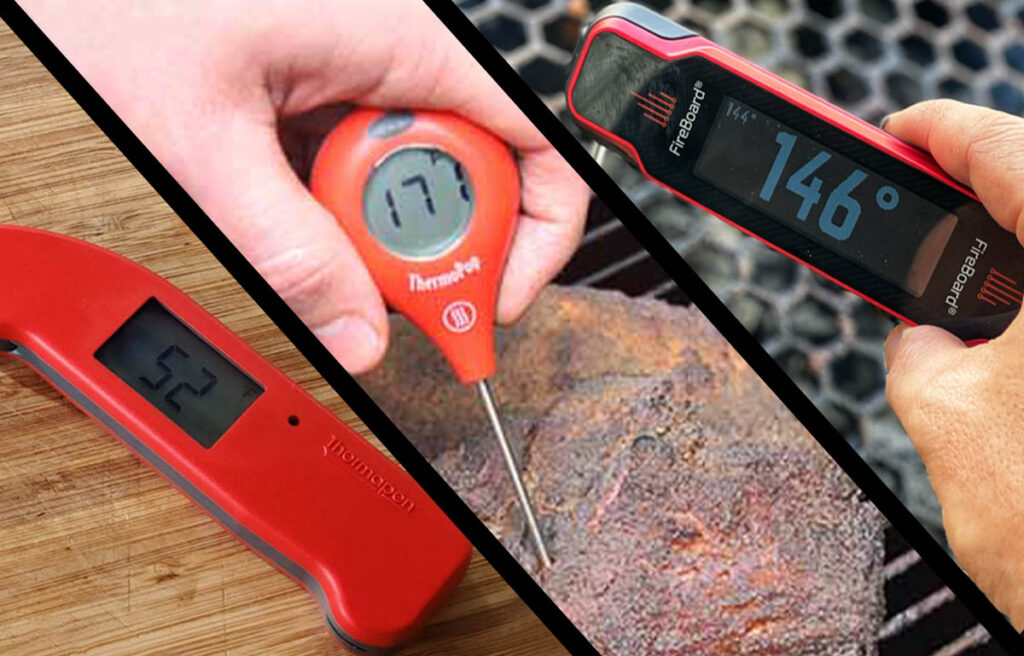
As a chef, I know how important it is to get the perfect ribeye steak every time. Whether you’re cooking for yourself or for a dinner party, there are some essential preparations that you need to know before you start.
First, always let the steak reach room temperature before starting to cook – this helps ensure that the steak is cooked evenly. Once the steak has reached room temperature, you want to season it generously with kosher salt, black pepper and maybe even some olive oil if you prefer. Also consider marinating your ribeye in Worcestershire sauce or other condiments according to taste, or creating a compound butter with herbs and spices to rub on top of the steak after searing.
Next, make sure you select a good cut of meat; thinner steaks like sirloin won’t absorb as much flavor while thicker steaks like bone-in ribeye steaks will more easily take on any flavors you introduce them to. Place the steak on a cutting board and liberally apply salt and pepper on both sides. Some people even recommend adding liquid such as soy sauce or Worcestershire sauce for added flavor as well.
To determine cooking time for the ribeye recipe, you need an instant-read thermometer inserted into the thickest part of the steak – not touching any bones if it’s a bone-in steak – for about 10 seconds. Your ideal finished temperature will depend on how well done you want yourribeye recipe: 130°F (54°C) is medium rare; 140°F (60°C) is medium; 155°F (68°C) is medium-well; 165 °F (74 °C) is well done. Make sure your thermometer stick out at least two inches once inserted.
Getting the Skillet Ready for the Perfect Ribeye Steak
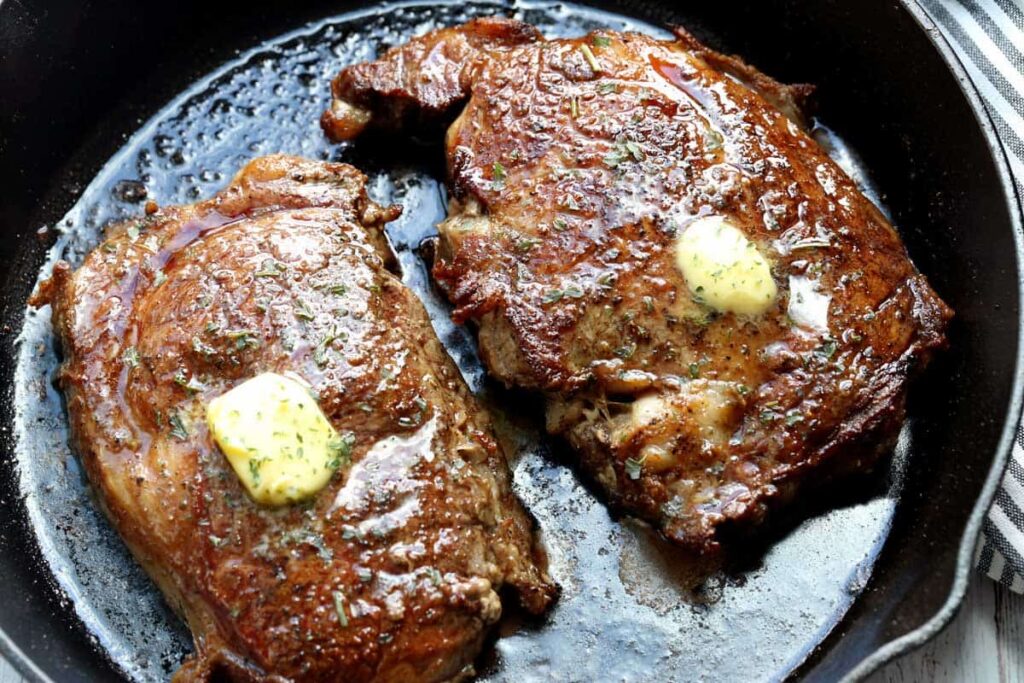
A hot skillet, with the right amount of olive oil, is key to achieving the perfect sear and flavor.
To start, you’ll want to set your stove to medium-high heat. Once your skillet is hot, add a tablespoon of olive oil and let it heat up for a few minutes. Pre-heating the oil will help ensure the steak browns without sticking to the pan.
Once the oil is hot, season your steak with salt and freshly cracked black pepper. Place the steak in the pan and let it cook for 2-3 minutes on the first side. Turn the steak over and let it cook for another 2-3 minutes.
If you’re cooking a thicker steak, you may need to reduce the heat to medium, so it cooks evenly. For thin steaks, you can leave the heat at medium-high.
Using oven mitts, carefully remove the skillet from the heat. Check the internal temperature of the steak to make sure it has reached your desired doneness. If it hasn’t reached your desired temperature, return the skillet to the heat and let it cook for a few more minutes.
Once the steak has reached your desired temperature, let it rest for a few minutes before serving. Allowing the steak to rest will help keep it juicy and flavorful.
As you can see, getting the skillet ready for the perfect ribeye steak is all about timing and temperature. Make sure you pre-heat the pan, season the steak properly, and let it cook until the internal temperature reaches your desired doneness. With a hot pan and the right amount of olive oil, you’ll be able to get the perfect pan-seared steaks every time.
Expert Techniques for Cooking the Perfect Ribeye Steak
Cooking the perfect ribeye steak is an art form, and mastering the technique can make all the difference in the final product. Whether you’re a professional chef or a home cook, the key to making a great steak is understanding the different techniques available, and knowing how to make the most of your ingredients. Here, we’ll take a look at some expert techniques for cooking a ribeye steak that will always deliver perfect results every time.
The first technique to consider is the pan-seared ribeye steak. To get the best results, you’ll want to start with a hot cast iron skillet or a hot cast-iron pan. Heat the pan over medium-high heat, then add some hot oil. Once the oil is hot, carefully place the steak into the pan. Sear the steak for about two minutes, then flip and sear the other side for an additional two minutes. This method will produce a crunchy, flavorful crust on the steak and will help to lock in the juices.
Another technique is the stovetop-to-oven method. This is a great technique for those who don’t have an oven-safe pan. Start by searing the steak in a hot skillet over medium-high heat for two minutes, then flip and sear the other side for another two minutes. Once you’ve achieved that crunchy, flavorful crust, transfer the steak to a preheated oven set to 350 degrees F and bake for 10-12 minutes, depending on the size and cut of steak. This method ensures that the steak is cooked evenly and to the desired doneness.
Finally, we have the classic method of cooking a ribeye steak: the reverse sear. This technique is great for those who want to cook their steak to medium rare or medium. Start by preheating your oven to 250 degrees F and putting the steak in the oven for 30-45 minutes. The low heat will slowly cook the steak all the way through. Once the steak is cooked, remove it from the oven and quickly sear it in a hot skillet for a few minutes. This will give the steak a beautiful, caramelized crust.
No matter which technique you use for your ribeye steak, be sure to pay attention to the details. Use a thermometer to check for doneness and create the perfect Maillard reaction on the steak. As a pro tip, it’s always a good idea to let the steak rest for a few minutes before serving – this will help to keep the juices locked in and give you the best results.
So, there you have it: the expert techniques for cooking the perfect ribeye steak. With the right ingredients, the right technique, and a bit of patience, you can cook a great steak in no time. Keep in mind that the total time for each technique will vary depending on the size and cut of steak, but you can expect to get the job done in about 20-30 minutes. So, don your apron, fire up the stove, and get ready to cook the best steak of your life!
The Importance of Resting Your Ribeye Steak
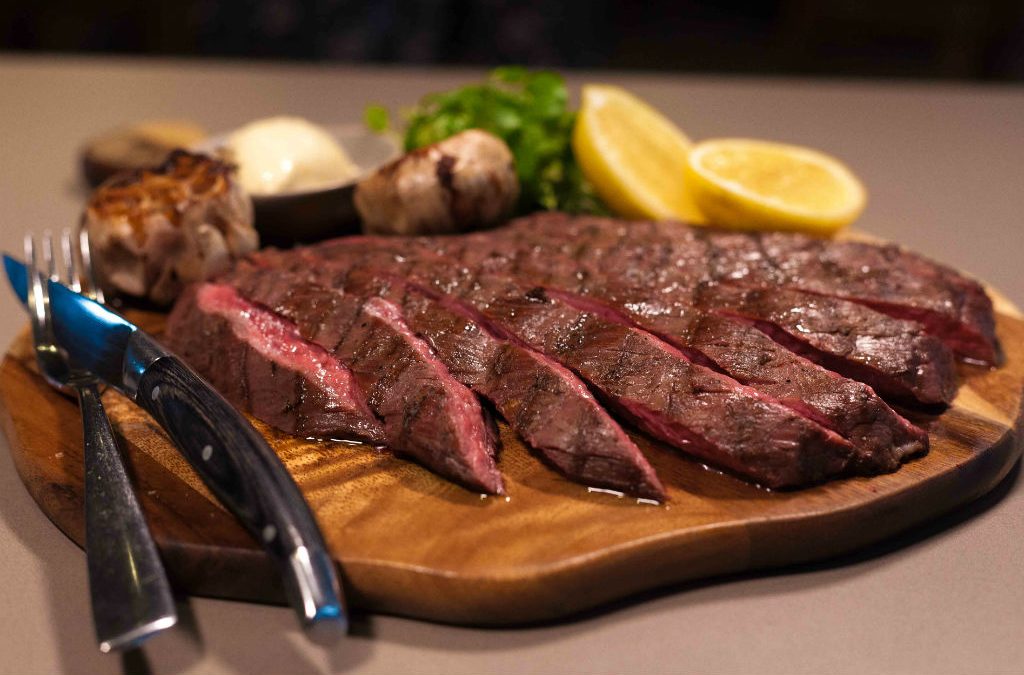
As a chef, I know that the most important step in cooking a ribeye steak is to let it rest. It’s a crucial step that can make or break your steak. Not allowing your steak to rest can ruin the steak by making it dry and tough. A good steak needs to be cooked properly and allowed to rest in order to get the best results.
The importance of resting a ribeye steak lies in the fact that it allows the meat to relax and redistribute its juices evenly. When heat is applied to a steak, the proteins and fats in the steak contract, causing the juices to be pushed to the outside. If the steak is cut too soon, all of the juices will rush out, resulting in a dry and tough steak. By allowing the steak to rest, you give it time to relax and the juices will be reabsorbed into the steak, resulting in a juicy and tender steak.
For the best results, you should let your ribeye steak rest for at least 5 minutes after cooking. This will help ensure that all of the juices are reabsorbed and that the steak is cooked to perfection. A medium-rare steak should reach an internal temperature of 125-130°F, and then allowed to rest for 5 minutes before serving.
When resting your steak, it’s important to remember that you should never cover it in tin foil or any other type of wrap. This will trap the steam and can make the steak soggy. Instead, you should wrap the steak in a paper towel or a clean kitchen towel to absorb extra moisture.
Resting your ribeye steak is an important step that can’t be skipped if you’re looking for the best results. It’s an easy and simple step that will ensure that your steak is cooked to perfection and comes out juicy and tender. So don’t forget to let your steak rest before you serve it!
Creating the Perfect Finishing Touches for Your Ribeye Steak
Creating the perfect finishing touches for your ribeye steak is all about the details. As a chef, I always strive to get the perfect steakhouse-quality ribeye steak every time. With a few simple tips, you can achieve restaurant-quality ribeye steak right in your own kitchen.
First, ensure you have good cutting board with ample space – this is essential as it allows you to properly slice the steak and avoid any messes. Before serving, season it well with salt and pepper, then brush with some butter – this will help create a delicious crust when cooking in your flavorful pan. Finally, add whole garlic cloves or rosemary sprigs to the top of it so your butter melts into them while cooking over medium-high heat.
Once done cooking, let your steak rest before slicing and transferring to a warm plate. This will help retain its juices and flavour. Then consider using an instant read thermometer to check your steak’s temperature – remember medium rare (130-135 degrees) or medium (145) are ideal temperatures for a perfect ribeye steak – although Cowboy steaks are traditionally served well done (155). Prior to serving, allow one final brushing of butter over each side of your steak for extra flavor – for all those aspiring chefs out there who want that “restaurant quality” look!
So there you have it: all the tips needed to create a delicious restaurant quality ribeye steak at home! Experiment with different touches and ingredients until you get that perfect combination of flavors – it’ll soon become everyone’s favorite steak dish!
More Ribeye Steak Resource
A Simple Recipe Using Rib Eye Steak
Sizzle and Satisfy: A Delicious BBQ Rib Eye Steak Recipe for Any Occasion
5-Star Crockpot Ribeye Steak Recipe: A Slow-Cooked Sensation
Ribeye Steak Sandwich Recipe: A Delicious Twist on a Classic Dish
The Perfect Thin Ribeye Steak Recipe: A Step-by-Step Guide
Best Way To Cook A Ribeye Steak on The Grill
How to Cook a Ribeye Steak Without a Cast Iron Skillet
How to Cook Bison Ribeye Steak: The Ultimate Guide
How To Cook Wagyu Ribeye Steak (Easy Than You Think)
How Long To Marinate Ribeye Steak? (for Perfect Juicy, Flavorful Results)
How to Tenderize Ribeye Steak for Maximum Flavor: Expert Tips and Techniques
How to Cut Ribeye Steak (Long Guide for the Perfect Steak)
How Much is a Ribeye Steak? (Let’s Find The Best Deals)
This article is a part of The Ultimate Steak Cookbook, our ever-growing mini encyclopedia on techniques for delicious steak recipes. Please bookmark and return. There will be a lot of useful information for you.

Shara @The Bird BBQ
Shara loves to experiment with different flavors and techniques when it comes to BBQ. She has been perfecting her craft for years and loves hosting backyard BBQs with friends & family. She often comes up with creative recipes that her guests rave about.

